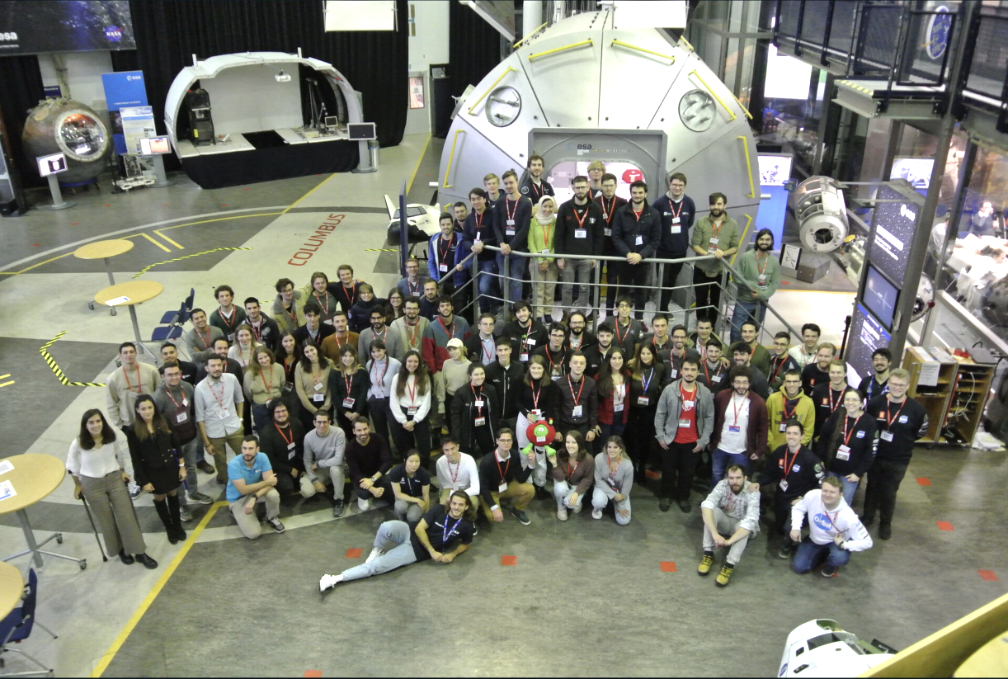
Last April, students from six CubeSats Teams successfully concluded the Baseline Design Review of their CubeSats as part of ESA Academy‘s new Fly Your Satellite! (FYS!) Design Booster Program — this phase of the pilot edition gave students the chance to benefit from ESA’ support to enrich and consolidate the design of their CubeSats.

The pilot edition of the new FYS! Design Booster Program aims to provide support to university teams across ESA Member States who have a preliminary design of a CubeSat and want to consolidate their detailed design.
Students learn to consider the full project lifecycle at the design stage, in terms of engineering, resources and expertise, which translates into smoother planning and execution of verification activities as well as more robust in-flight operations. Special emphasis is made on the importance of early testing, and teams are invited to work on prototypes and development models to demonstrate functionalities and performances are adequate.
In November of 2022, 80 students from different ESA Member States went through the Training Week and six teams were selected to participate in FYS! Design Booster programme.
- 6S – University: Politecnico di Milano, Italy
- AlbaSat – University: Università degli di Studi di Padova, Italy
- BIXO – University: University of Vigo, Spain
- ROSPIN-SAT-1 – University: Politehnica University of Bucharest, Romania
- SAGE – University: ETH Zurich, Switzerland
- ST3LLAR-Sat1 – University: Universidad Carlos III de Madrid, Spain
The first phase of the Design Booster Program, called Baseline Design Review, occurred online from April 3-12. It is a tailored version of the standard ESA review, where key issues and discrepancies are identified to come up with reparatory actions together with ESA experts.

Student teams submitted their CubeSat Project File, which was reviewed by FYS! coordinators and ESA experts. They generated Review Item Discrepancies, which serve as an input to discussion during collocation meetings. As in a standard ESA review, more than 70 collocation meetings took place with experts of different domains such as Mission Analyses, Payload, Software, System Engineering and much more.
Continuing with this enthusiasm, students will now enter the Design Consolidation and Subsystem Testing Phase (April 2023 – February 2024), where they will adopt the experts‘ advices. They will develop in-house built subsystems which will be subjected to extensive testing. The teams will also work on implementation of Commercial-Off-The-Shelf (COTS) components and make sure the whole systems work together flawlessly.
The Final Design Review will be carried out in approximately a year from now. Students will be already acquainted with ESA standards and practices and will be then ready to autonomously continue developing their CubeSat projects. They will present all the lessons learned and project outlook for the future development, launch, operations and decommission.
This detailed documentation review helps students to identify eventual issues in time and even completely avoid them. The discussion during collocations enhances students‘ knowledge on the topic and allows them to receive, understand, interpret and implement sometimes complicated and not-at-first-glance clear solutions.

“Our participation in ESA’s FYS Design Booster program has been challenging, with an intense pace and many documents and collocation meetings. But above all, the first year of the programme has been a really good opportunity to learn and especially, the ESA team has helped us take our mission from a preliminary concept to many-steps closer a consolidated system. Our thanks to the team and looking forward the 2nd year.”
— ST3LLARsat1 supervising professor
”The Baseline Design Review was a very valuable experience for the SAGE CubeSat Team. We not only got a sneak peek into the review process at ESA but also got the chance to get feedback on our CubeSat design. Over a span of 13 colocation meetings, the team was able to exchange with ESA experts, discuss the RIDs and define action items. Overall SAGE got invaluable input from this review and has already started with the implementation of the defined actions. We are looking forward to the upcoming phases of the CubeSat design process!”
— student comments
”It’s a long and difficult journey to design a satellite, but the experts are there to help and guide you along the way. Just try to enjoy the journey and the possibility to learn a lot of new things,” one student concluded.
